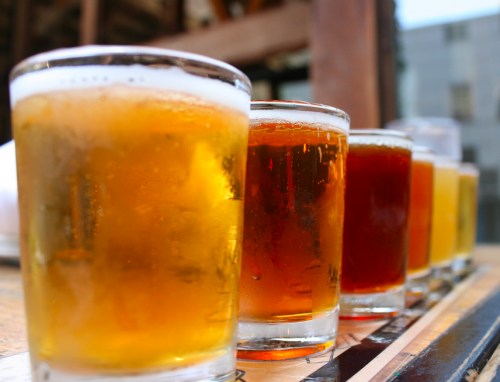Acetaldehyde, a product of the breakdown of alcohol, damages the DNA of hematopoietic stem cells (HSCs), the cells that generate blood cells in your bone marrow. DNA damage inflicted by acetaldehyde can result in cell death and cancers like leukemia. This compound, responsible for many of the toxic effects of alcohol, is broken down by the enzyme aldehyde dehydrogenase 2 (ALDH2) to acetyl-CoA, a common compound used to generate energy. However, 540 million people do not produce aldehyde dehydrogenase 2, meaning this toxic byproduct remains in their system long after it should.
In these people, acetaldehyde can seriously damage their DNA. Luckily, many of these humans still express FANCD2, a protein which can mitigate the damaging effects of acetaldehyde through DNA crosslink repair. Crosslink repair causes two similar sequences of DNA to crossover and exchange bases, restoring the proper DNA without mutations. Each DNA complex possesses two complementary strands, and this type of repair requires one of the two strands to be undamaged for use as a template to reconstruct the second DNA strand. When both strands of DNA are broken, which acetaldehyde can cause, non-homologous end joining repair (NHEJ) is initiated instead. NHEJ is a “last reserve” strategy which rejoins DNA haphazardly, often resulting in mutations.
Researchers at the University of Cambridge, led by principal investigator Ketan Jayakrishna Patel, recently published a study in Nature comparing the mutation rates of mice expressing and not expressing various combinations of these proteins. They concluded that the breakdown of acetaldehyde by ALDH2 is the first line of DNA defense. If both DNA strands break, however, the DNA must be fixed through DNA crosslinking or NHEJ repair. This way, the cell avoids DNA damage if possible, but is able to repair it if that damage does occur. Mice that did not express FANCD2 or ALDH2 presented severely low counts of HSCs, which the scientists thought was caused by a gene named p53.
The p53 protein, which leads to cell death if it determines DNA damage to be too severe, likely killed many of the damaged HSCs. Therefore, when p53 was removed, HSCs displayed healthier numbers. Interestingly, this gene, originally intended to act as a “quality control” for cells, actually caused more damage than good. “Imagine buying carrots from a specialized carrot dealer. These carrots would all be perfect compared to the bent ones of local farmers’ markets,” Patel said. This specialized carrot dealer, analogous to p53, weeds out any imperfections in cells and only allows these so-called “perfect carrots” to survive.
Here’s the bottom line: alcohol is harmful because its byproduct can damage DNA, but our DNA repair mechanisms are often capable of ameliorating the harm. These DNA repair pathways must be integrated, each playing its proper role. However, if these pathways fail, or even if they are fully functional, flaws in DNA can still go unnoticed. “Excessive alcohol is linked to cancer and causes diseases. The pathways are fine, but they are not 100% fail-safe, particularly when individuals binge drink,” Patel said.
References
[1] Alcohol and endogenous aldehydes damage chromosomes and mutate stem cells juan i. Garaycoechea1, Gerry P. crossan1, Frédéric Langevin1, Lee Mulderrig1, Sandra Louzada2, Fentang yang2, Guillaume Guilbaud1, naomi Park2, Sophie roerink2, Serena nik-Zainal2, Michael r. Stratton2 & Ketan j. Patel1,3
[2] Wang, M. et al. Identi cation of DNA adducts of acetaldehyde. Chem. Res. Toxicol. 13, 1149–1157 (2000).
[3] Lai, C. L. et al. Dominance of the inactive Asian variant over activity and protein contents of mitochondrial aldehyde dehydrogenase 2 in human liver. Alcohol. Clin. Exp. Res. 38, 44–50 (2014).
[4] https://www.ncbi.nlm.nih.gov/gene/22059

